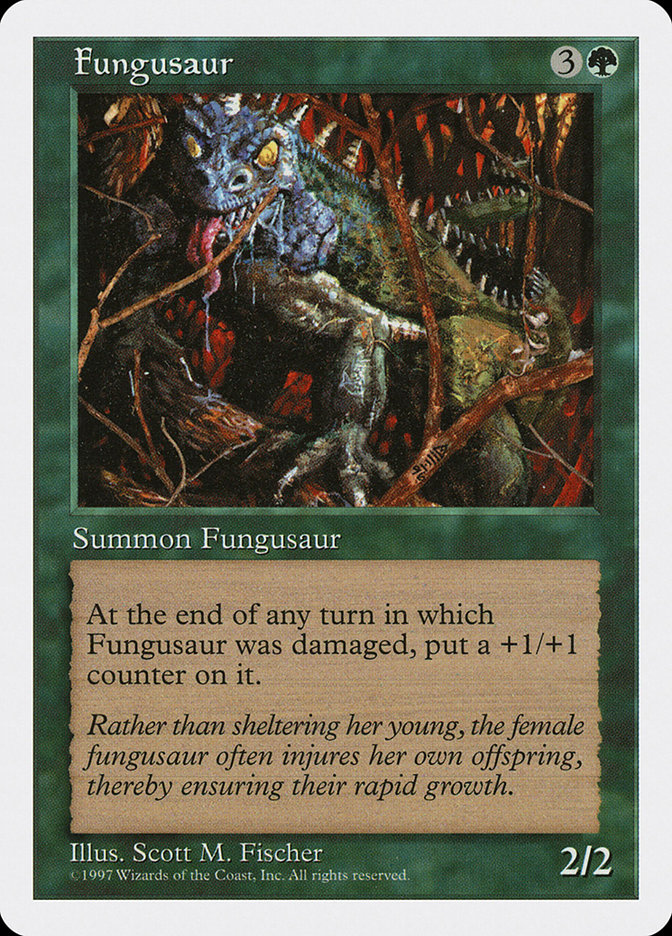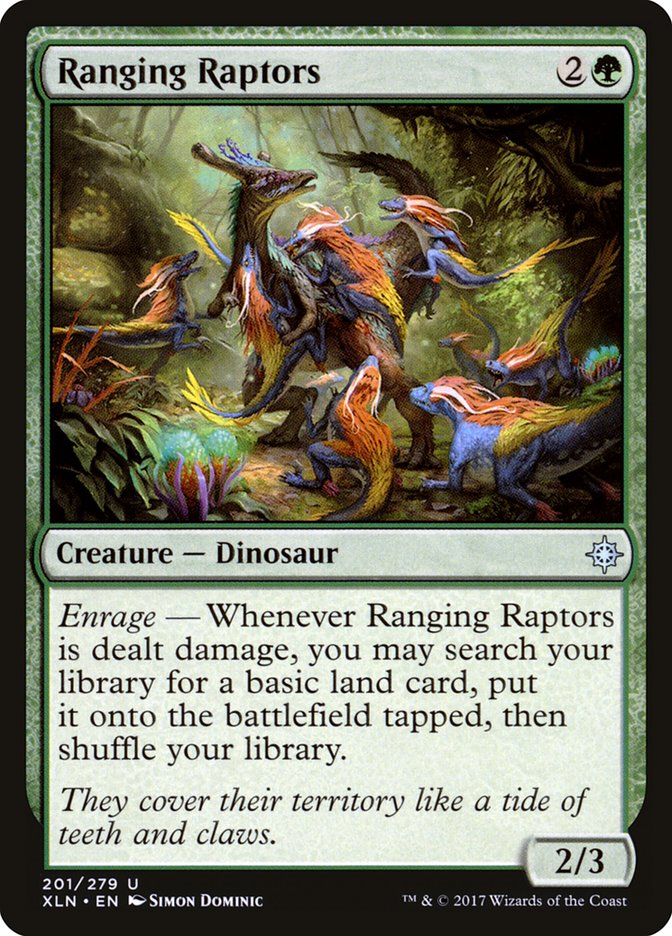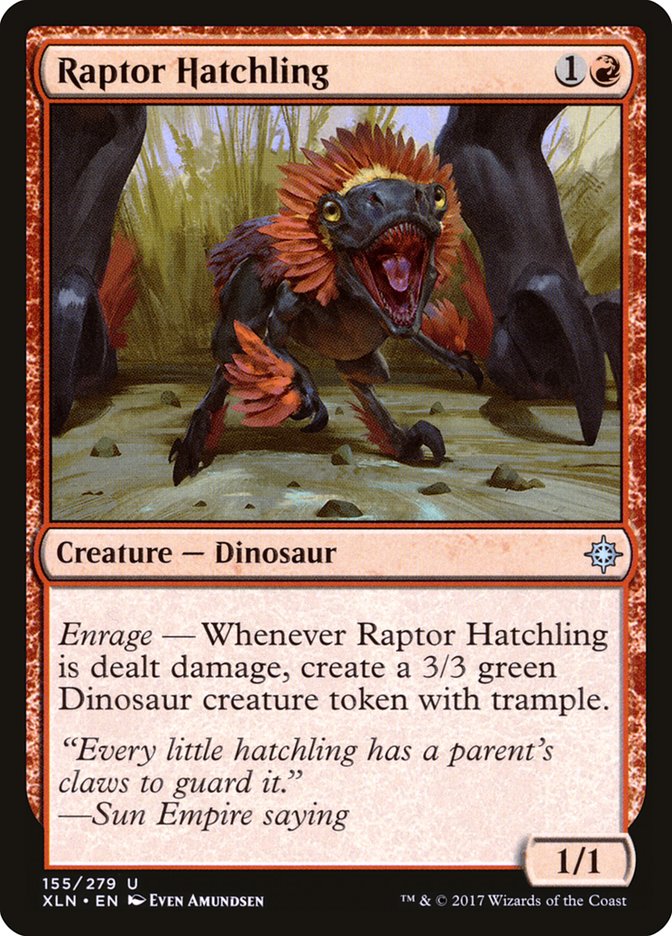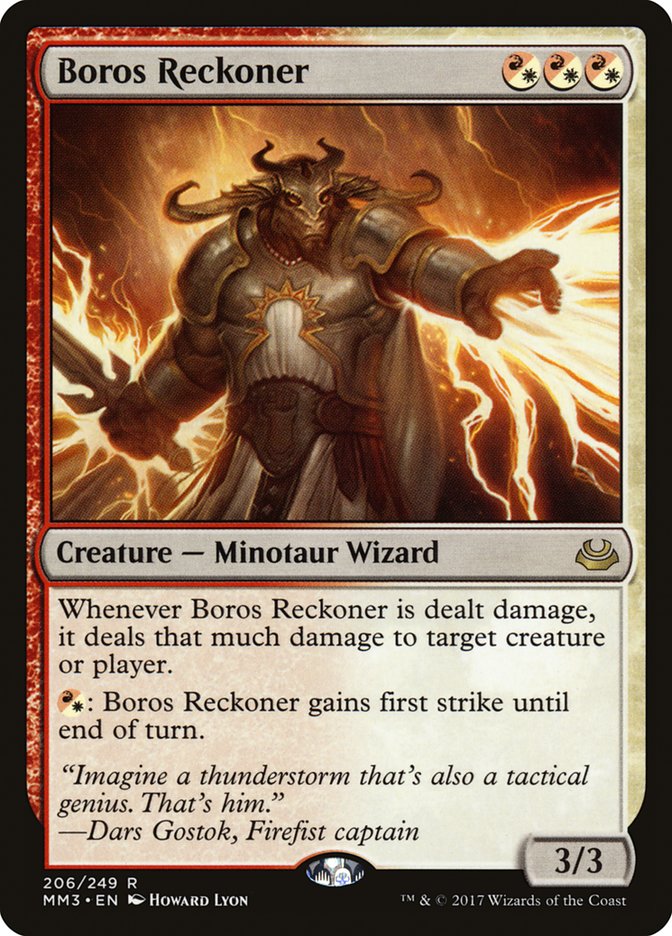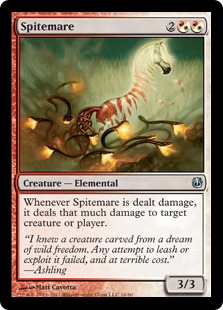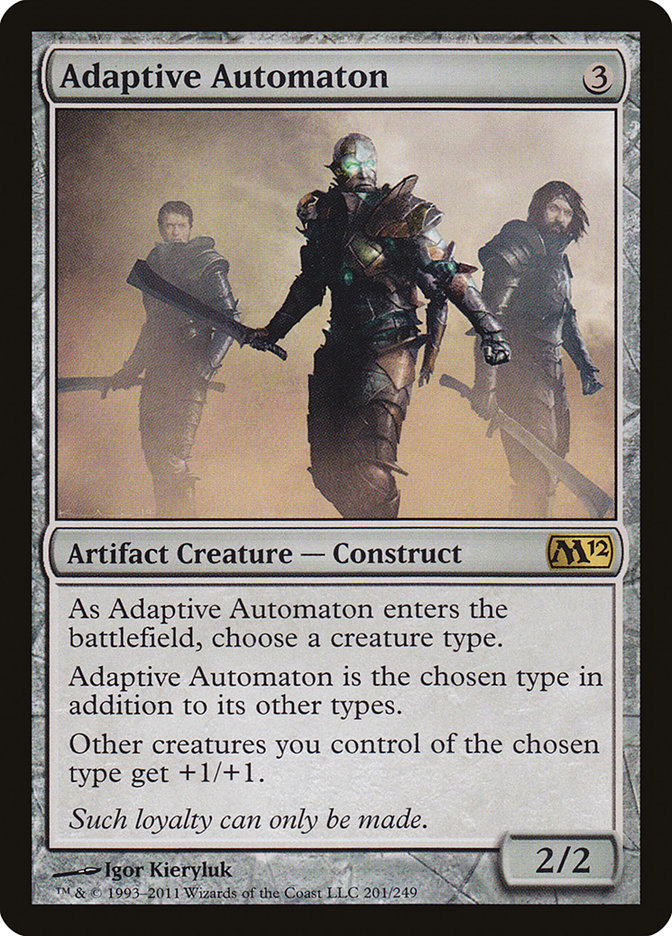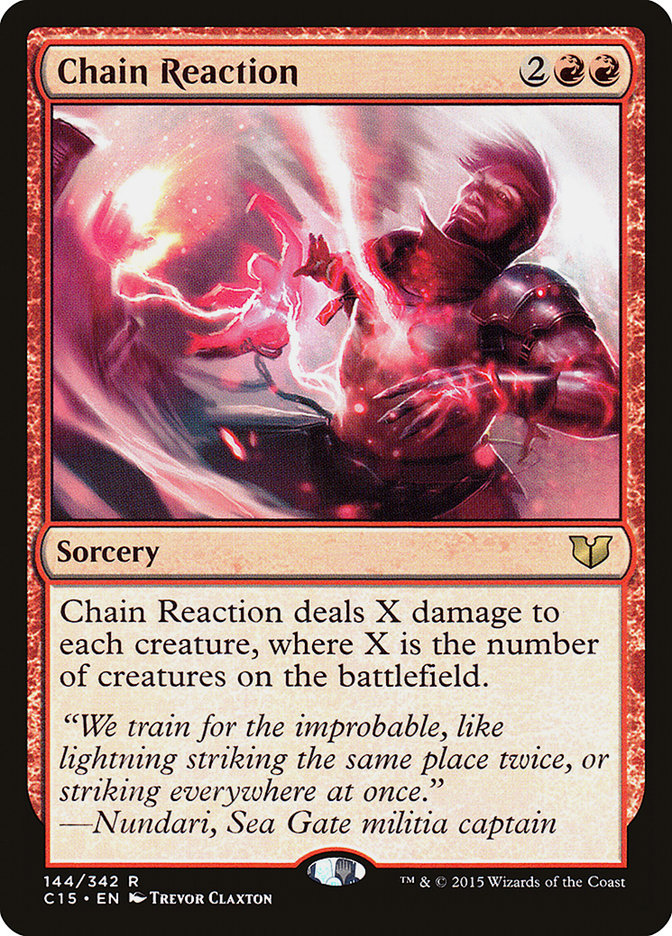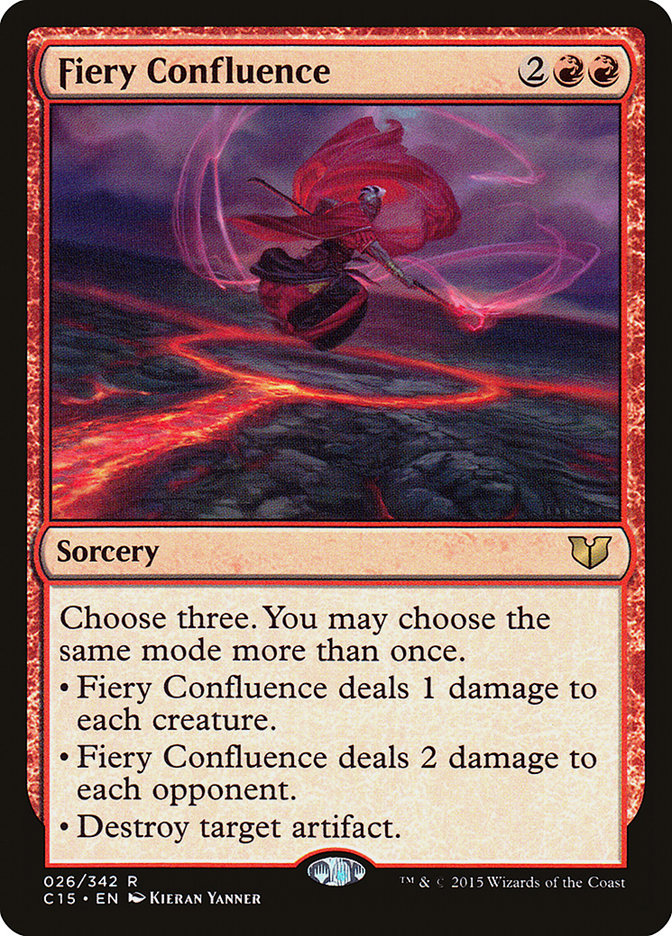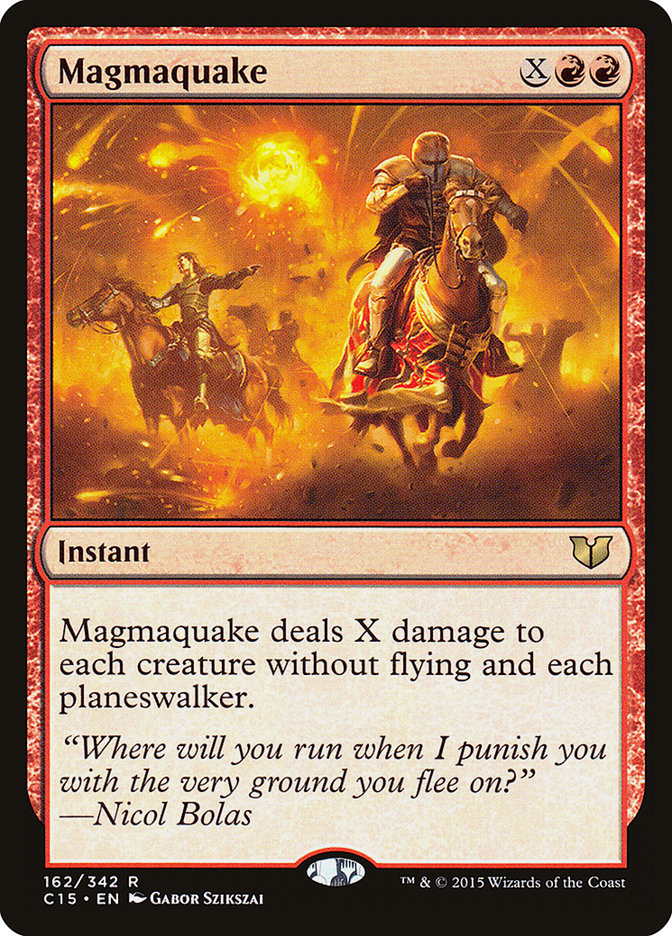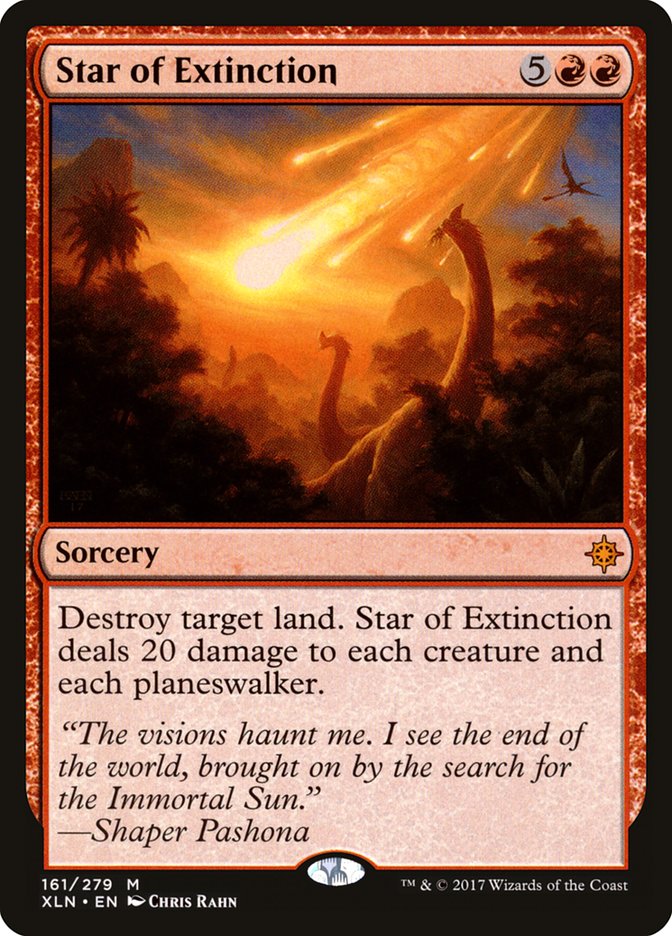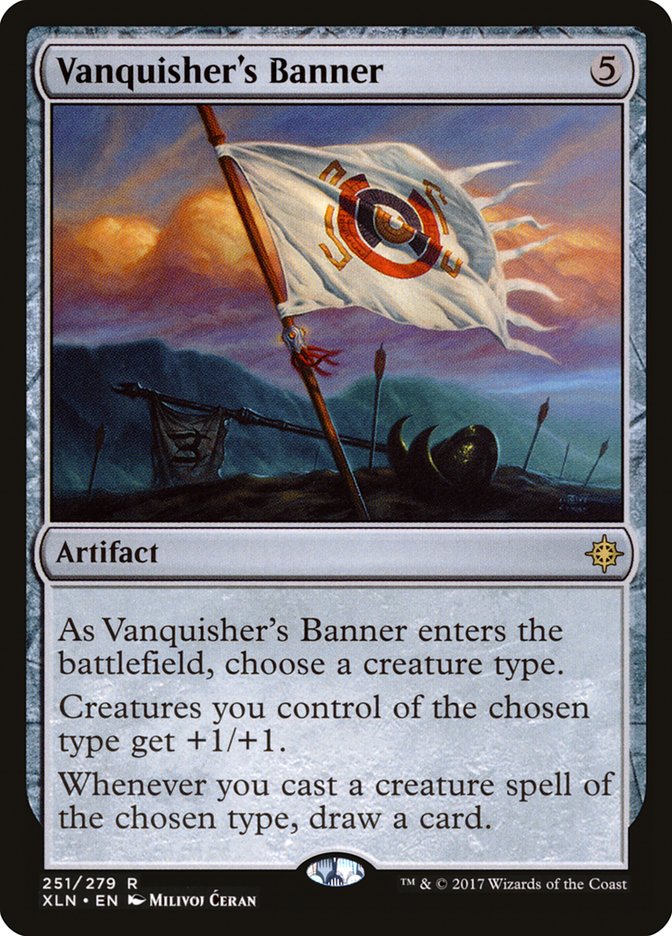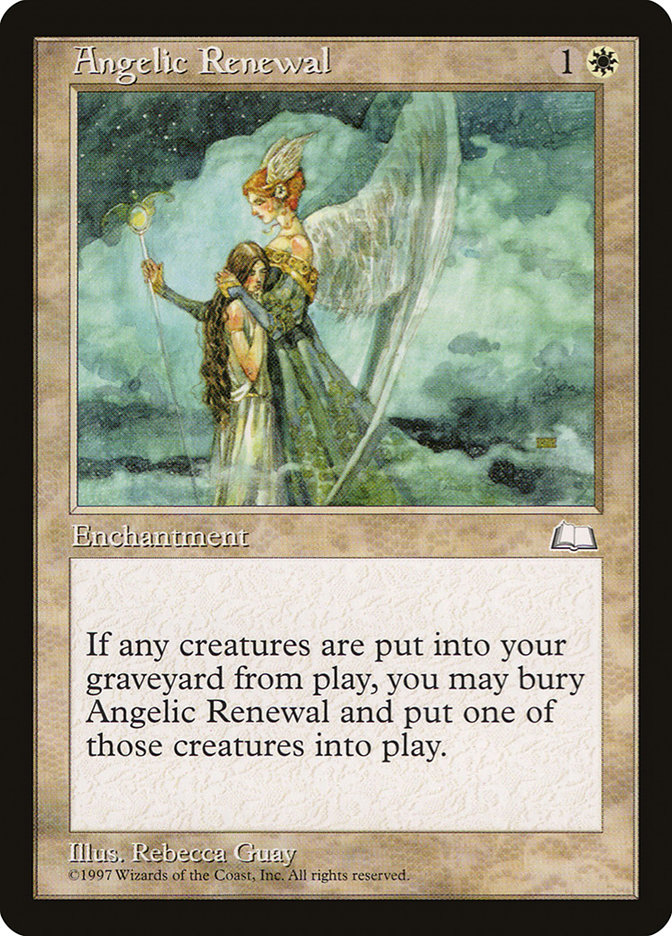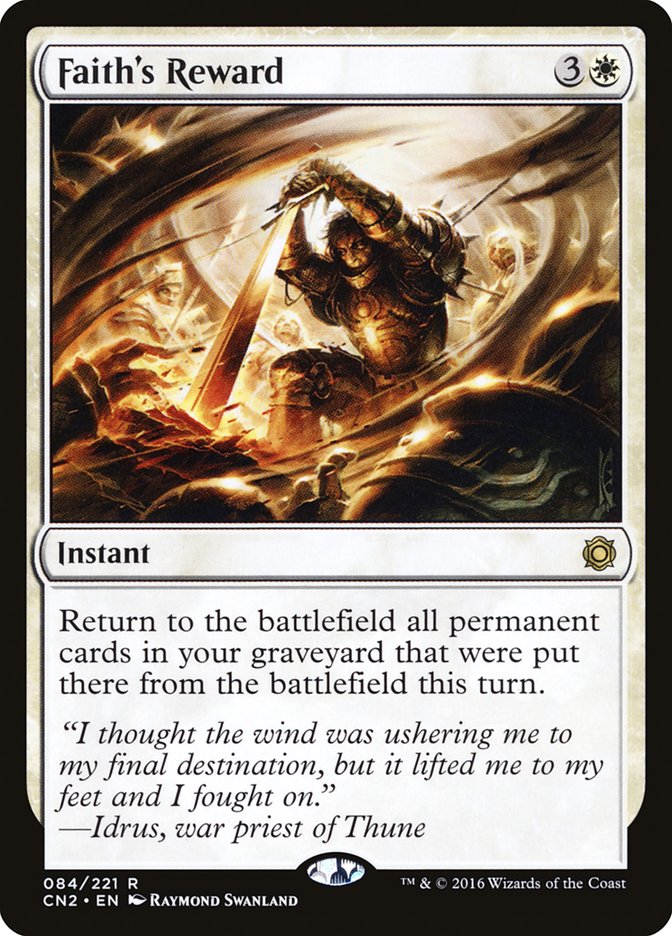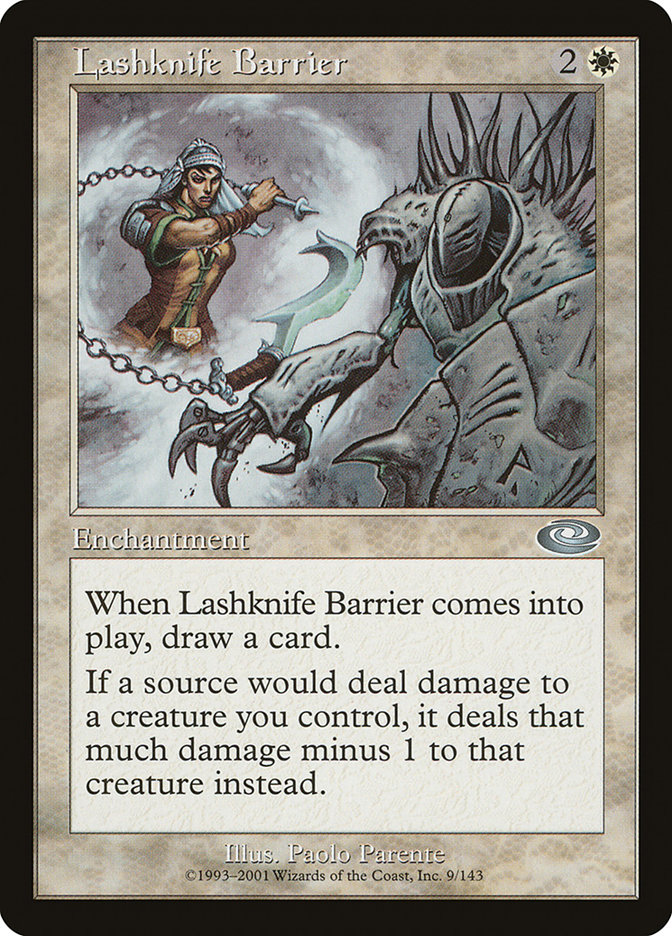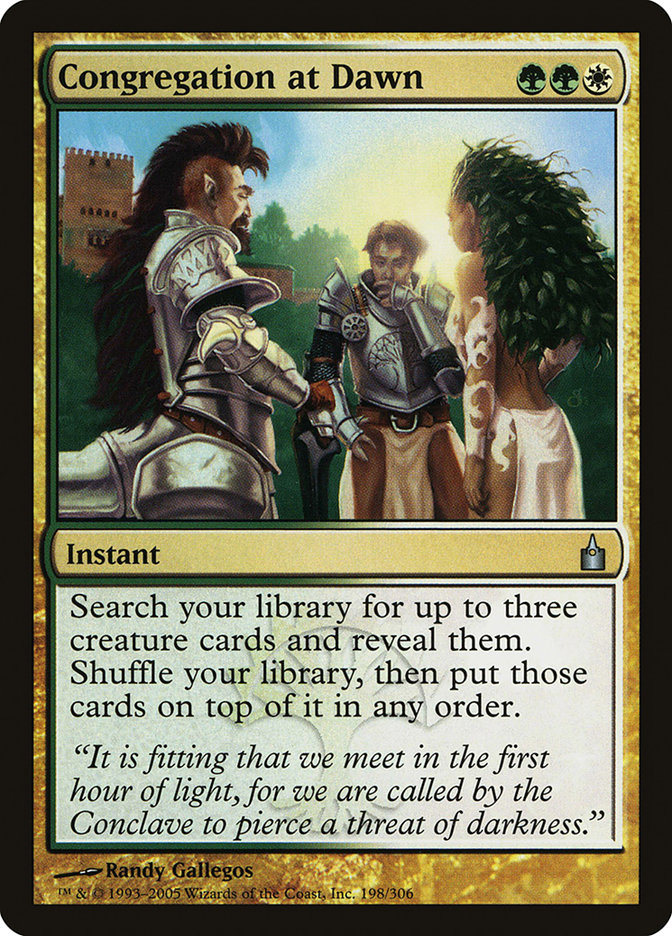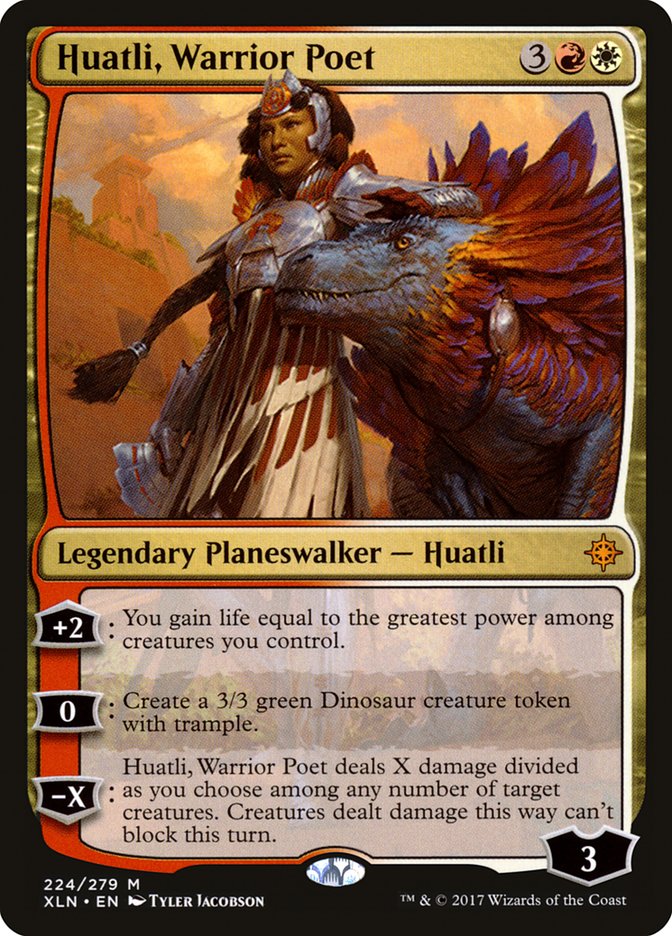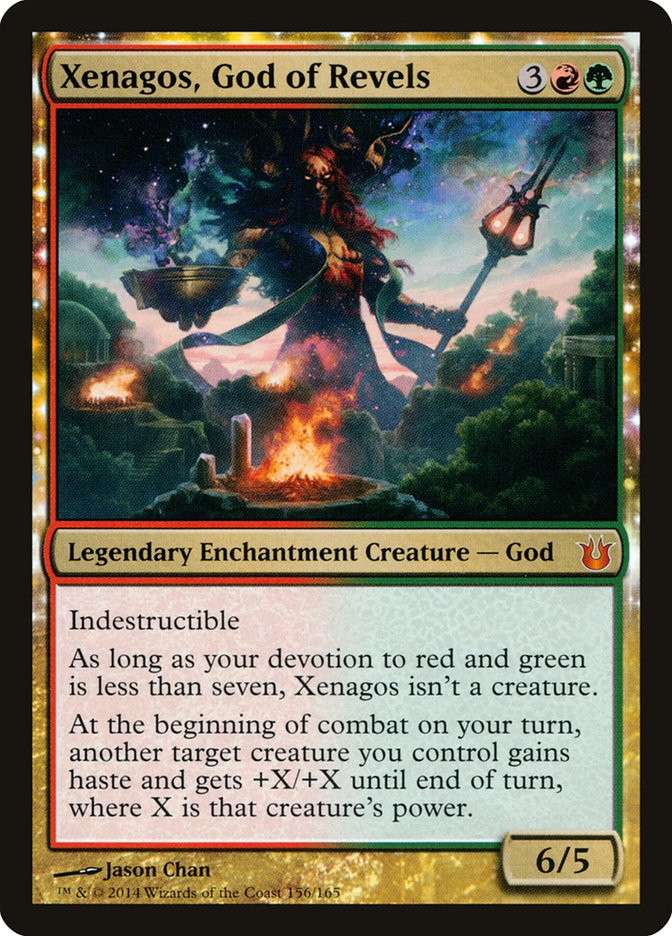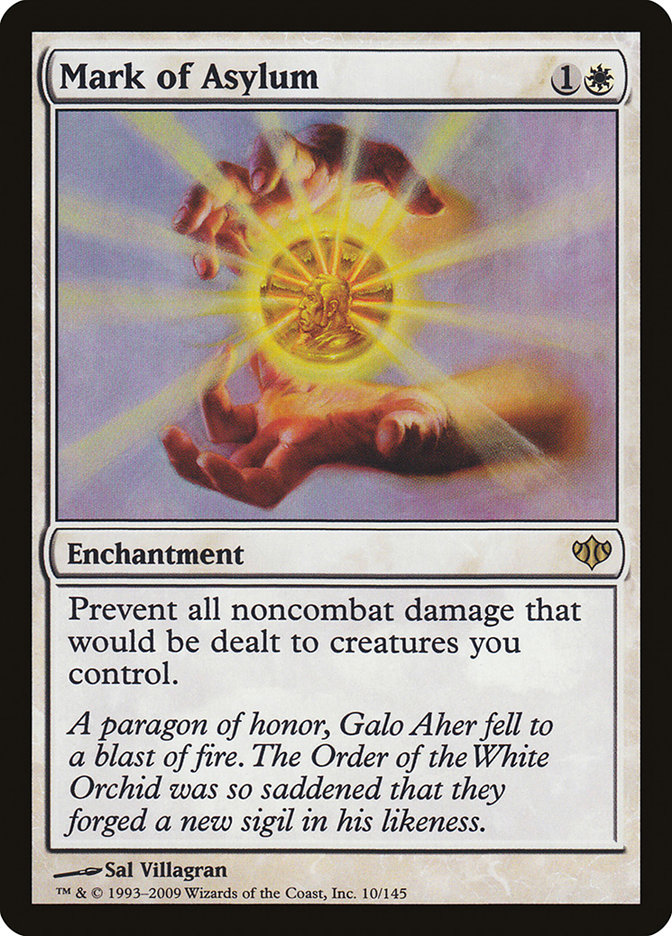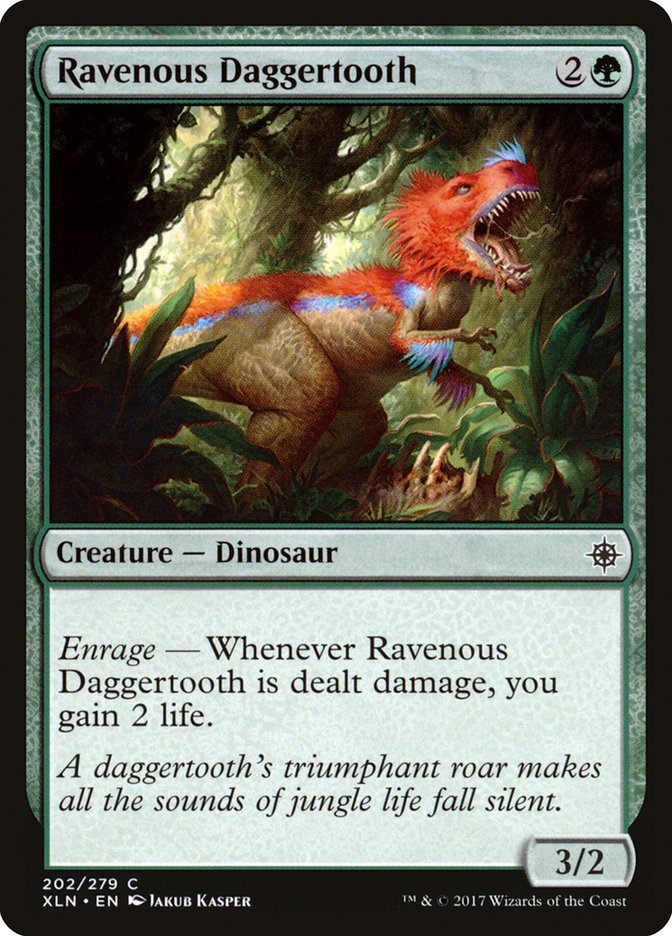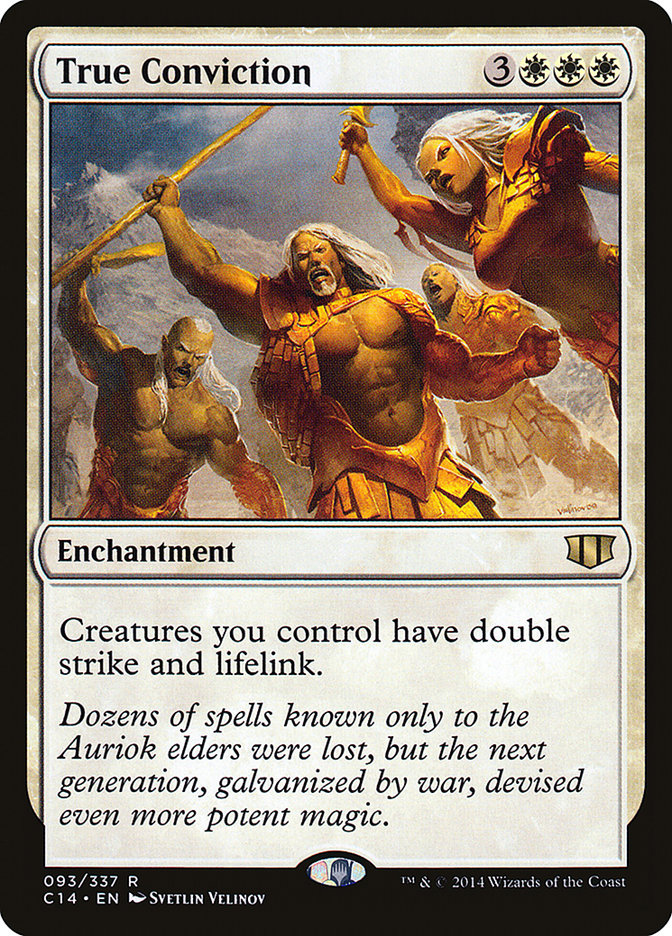Okay, let’s get this out of the way right from the start. Here’s your obligatory Jimmie Walker. Now we can dispense with all the “Dino” puns, no doubt much to the chagrin of Luis Scott-Vargas and Rich Hagon. I suppose I’ve have to deal with the disappointment.
I’ll also tell you that this place, which I know friend of the show and Pro Tour Historian Brian David-Marshall has taken his niece, is fifteen minutes from my house. I might go to get some additional inspiration.
Wordplay aside, there’s plenty to be excited about Dinosaurs in Commander. At the top of the list is the commander, Gishath, Sun’s Avatar. It’s somewhat linear in what it can do, but that doesn’t mean a build of it can’t be loads of fun. We know that we’ll need some Dinosaurs to take advantage of our commander’s ability, but after that we can build to suit our tastes. In this case, I started with some of the obvious cards and then simply asked myself which cards would be fun to play with. I had a few ideas on general themes going in, but I let my mood decide as I pored over card lists. As you’ll see, the Enrage mechanic informed quite a few choices. Here’s the 99 I came up with:
Creatures (25)
- 1 Fungusaur
- 1 Stuffy Doll
- 1 Scourge of Kher Ridges
- 1 Chameleon Colossus
- 1 Spitemare
- 1 Terastodon
- 1 Adaptive Automaton
- 1 Boros Reckoner
- 1 Nylea, God of the Hunt
- 1 Karametra, God of Harvests
- 1 Xenagos, God of Revels
- 1 Kinjalli's Sunwing
- 1 Verdant Sun's Avatar
- 1 Burning Sun's Avatar
- 1 Regisaur Alpha
- 1 Goring Ceratops
- 1 Ripjaw Raptor
- 1 Bellowing Aegisaur
- 1 Wakening Sun's Avatar
- 1 Raging Swordtooth
- 1 Ranging Raptors
- 1 Raptor Hatchling
- 1 Thundering Spineback
- 1 Snapping Sailback
- 1 Deathgorge Scavenger
Planeswalkers (1)
Lands (37)
Spells (36)
- 1 Sol Ring
- 1 Rampant Growth
- 1 Kodama's Reach
- 1 Mirari's Wake
- 1 Sword of Fire and Ice
- 1 Fault Line
- 1 Rite of Passage
- 1 Savage Beating
- 1 Aether Flash
- 1 Angelic Renewal
- 1 Lashknife Barrier
- 1 Skyshroud Claim
- 1 Powerstone Minefield
- 1 Congregation at Dawn
- 1 Chain Reaction
- 1 Bear Umbra
- 1 Lightmine Field
- 1 Cultivate
- 1 Asceticism
- 1 Sword of Feast and Famine
- 1 Blasphemous Act
- 1 Magmaquake
- 1 Faith's Reward
- 1 Rootborn Defenses
- 1 Boros Charm
- 1 Commander's Sphere
- 1 Fiery Confluence
- 1 Zendikar Resurgent
- 1 Make a Stand
- 1 Heroic Intervention
- 1 Hazoret's Monument
- 1 Rhonas's Monument
- 1 Vanquisher's Banner
- 1 Star of Extinction
- 1 Hammer of Nazahn
- 1 Kindred Boon

You might notice that, for a tribal deck, the creature count might be a little low. The reason for that is twofold. First, I simply expect more Dinosaurs to come thundering into the picture in Rivals of Ixalan. Second, Gishath is expensive to cast. If it gets killed once or twice, we’ll need other weapons in our arsenal, so buffing up some of the other creatures with some of those Equipment cards will be one of our paths to victory. The first look for this deck, however, is to strongly focus on the commander.
The Commander
We’re going to try to keep Gishath alive with Hammer of Nazahn and then deal enough damage each turn to get at least one Dinosaur onto the battlefield. Said commander damage will start to pile up, even if we’re not going full Voltron, plus it creates other things to worry about—namely, more big Dinosaurs. The other Equipment, Sword of Fire and Ice plus Sword of Feast and Famine, do enough in their own right to warrant inclusion—and looking a little deeper into the library isn’t going to hurt. Savage Beating is in the deck specifically to go with Gishash, both to get a second trigger and to set up possible one-shot commander damage kills.
The Enrage Suite
The wheel around which everything stems is the Enrage mechanic, even if that’s the non-keyworded version of the ability, such as on Fungusaur or Stuffy Doll. The Enrage suite takes into account the Dinosaurs and other creatures, the cards which deal the damage or make the creatures more difficult to kiil, and a recovery path should things not go the way we want.
The Dinosaurs
Bellowing Aegisaur: Part beatstick and part support, Bellowing Aegisaur makes our team larger and more difficult to kill.
Fungusaur: The original Enrage creature, Fungusaur has been given errata to be a Dinosaur, so it merits inclusion.
Ranging Raptors: Some ramp in a nice little package, Ranging Raptors will not doubt be worth its weight in not just putting lands onto the battlefield but in thinning the deck so that more Dinosaurs come up off Gishath triggers.
Raptor Hatchling: For the most part, this will be a one-shot, but once one of those buffers such as Vanquisher’s Banner or Mirari’s Wake is online, Raptor Hatchling will start spawning even more friends.
Ripjaw Raptor: I’m thoroughly excited by Ripjaw Raptor, and not just for this deck. I can see it being a fine card draw engine in a number of builds.
Snapping Sailback: There will be a fair number of counters getting generated, so expect Snapping Sailback to get rather large.
The Other Creatures
Boros Reckoner: You can’t much have Blasphemous Act and Chain Reaction (and now Star of Extinction!) in a R/W/X deck without playing Boros Reckoner. Players low on life have to be careful that they don’t get killed by someone swinging a large attacker into you. That low life might happen as Boros Reckoner continues to get small bits of damage every now and again.
Spitemare: Boros Reckoner’s slightly more expensive older cousin, Spitemare will also get you there.
Stuffy Doll: Ditto (tritto?) for Stuffy Doll, which also has the advantage of not ever going away unless it gets exiled or bounced.
Support
Adaptive Automaton: Not only does it become a Dinosaur, but Adaptive Automaton makes its companions larger.
Aether Flash: One of the first cards I thought of when building the deck because it gets lots of mileage in You Did This to Yourself. Not only will it trigger our Enrage abilities, but it will keep opponents from being able to develop swarms of small creatures. The tokens we create are large enough that we don’t have to worry about Aether Flash killing them.
Asceticism: I normally include Asceticism for its hexproof ability. In this case, it’s more about regeneration, which means a creature can take damage, trigger Enrage, and still survive. Hexproof is just icing on our thunder lizard cake.
Blasphemous Act: Destroying creatures with damage is an obvious choice for the Enrage suite. In the worst cases—those in which we don’t have a recovery option—at least we still get some triggers.
Chain Reaction: Like with Blasphemous Act, Chain Reaction’s relatively low casting cost gives us the opportunity to use some of our recovery options as well. Chain Reaction plus Faith’s Reward is easily castable on one turn.
Fault Line: Still looking for this to somehow be available in foil. This will especially be valuable if we’ve gotten Verdant Sun’s Avatar online and gained big piles of life.
Fiery Confluence: The little bit of flexibility we get from Fiery Confluence means that we’ll be able to, for a reasonably small amount of mana, trigger our Enrage abilities and destroy a few artifacts.
Lightmine Field: Both an offensive and defensive weapon, Lightmine Field offers fine control over Enrage triggers. We can attack with just enough creatures so that the trigger won’t kill them (although I suppose we still have to be aware of blocks—but hey, there’s another trigger).
Magmaquake: Basically a Fault Line which damages planeswalkers instead of players—but the important part is, of course, creatures.
Mirari’s Wake: You can’t say enough good things about Mirari’s Wake. You also can’t complain when it gets blown up.
Powerstone Minefield: Powerstone Minefield is useable on the defensive side of the ball as well, so people are less likely to send meaningless attacks your way.
Rite of Passage: Especially valuable when we can deal damage one point at a time, such as with…
Scourge of Kher Ridges: Two damage at a time still isn’t going to kill most of our Enragers, but I seriously considered Harbinger of the Hunt as a lower-cost replacement. Subterranean Spirit might also be worth a look, although it’s not repeatable in a turn. If you want to go the chaos angle, there’s Warmonger, but that offers opponents too much control. Scourge of Kher Ridges remains the highest-quality choice.
Star of Extinction: Remember that when a targeted spell no longer has targets it gets countered. Choose the land you want to blow up very carefully, and pay attention to whether or not there’s a Wasteland, Strip Mine, or Tectonic Edge on the battlefield.
Thundering Spineback: This might also be one to protect with Hammer of Nazahn, since it can have children.
Vanquisher’s Banner: The number of Dinosaurs might (for now) be a little low to get full value out of Vanquisher’s Banner’s triggered ability to draw cards, but remember you can always draw one by casting the commander.
Recovery
Angelic Renewal: A serious hidden gem, Angelic Renewal allows you to save a creature with the added bonus of possibly getting another cool enters-the-battlefield trigger. Its low casting cost makes it something you can cast on an early turn to hang around until you need it or cast on the turn that you know the bodies will hit the floor.
Bear Umbra: Another card I expect that we would see way more of in the format, the cool thing about Bear Umbra is that the damage still gets dealt to the creature, triggering all the wonderful things we want to trigger. The whole thing about untapping all your lands is obviously strong, giving you the opportunity to cast twice as much stuff.
Boros Charm: Making all our permanents indestructible right before casting (or in response to) Blasphemous Act is good beats. The damage is still dealt, once again making our triggers happen, but we still get to hang onto the creatures. There might be an outside chance of using Boros Charm’s double strike ability to engender a commander damage kill, but I can’t see that happening all that often.
Faith’s Reward: The obvious scenario is to deal lots of damage (such as with Blasphemous Act or its cousins), get Enrage triggers, then get all your creatures back. Even without that somewhat aggressive play, Faith’s Reward is simply protection against a great deal of what happens in the format anyway.
Heroic Intervention, Make a Stand, Rootborn Defenses: Regardless of whatever else they do, all three of these cards are about one thing—making our creatures indestructible so that we can get triggers without worrying about losing our creatures. Like with Faith’s Reward, they also have basic value outside of our strategies.
Kindred Boon: Another method of making creatures indestructible. If there were a Myojin that does something the deck wants to do, I’d put that on the list as well.
Lashknife Barrier: It might seem counterintuitive to have Lashknife Barrier in a deck in which we’re trying to damage our own creatures, but hear me out. It only prevents one damage, so when we have things like Aether Flash, we get the best of both worlds. Plus, it replaces itself. If you’re not playing this card in at least a few of your white decks, I implore you to give it a deeper look.
Yavimaya Hollow: Making regeneration cool since, um, a long time ago, when some of you were very young.
The Rest of It
Decks don’t always run just on a theme. They need cards to get them there in the first place, such as the ramp spells like Rampant Growth, Kodama’s Reach, Cultivate, and Skyshroud Claim. Karametra, God of Harvests is a card along those same lines. Commander’s Sphere is an excellent if unspectacular card for the format and I look forward to the day that it’s available in foil. Here are notes on a few other cards:
Congregation at Dawn: With Gishath’s trigger on the stack, casting (okay, resolving) Congregation at Dawn means you’ll get exactly what you want onto the battlefield. I’m comfortable playing it in the deck because there aren’t any broken creature combos here. It’s not like with having Mike and Trike available. Congregation at Dawn make me think about Lurking Predators, but I simply told myself that I’m playing that card in enough decks that I just don’t want to go back to that well again.
Hazoret’s Monument: Mostly there for making creatures cheaper to cast, the ability to filter through the deck also has value—although I most often find that if you play all really cool cards, you have trouble wanting to discard them.
Huatli, Warrior Poet: I want to see the situations in which it gets used in play before I make a definitive judgment about Huatli, Warrior Poet. It seems like it fills a nice utility role and the –X ability could lead to game-winning attacks when an opponent has not left back enough creatures, but we’ll see.
Rhonas’s Monument: Cast a few creature spells in a turn (more cheaply) and suddenly a creature gets immense, which is particularly good when that creature is your commander.
Terastodon: It sounds like it’s a Dinosaur, and it provides a small measure of control over noncreature permanents. It’ll probably come out in favor of new Dinosaurs from Rivals of Ixalan.
Xenagos, God of Revels: Helping Gishath to get to some commander damage kills (not to mention a larger selection of Dinosaurs) as well as just being an extremely strong combat element on its own.
Other Cards to Consider
Mark of Asylum: Along the lines of Lashknife Barrier, I thought about it and came to the conclusion that it might provide too much protection for the team.
Mogg Maniac: Part of the Boros Reckoner idea, it didn’t make the cut because it can’t survive the small stuff in order to get to the bigger.
Ravenous Daggertooth: Gaining the two life is fine, but with space at a premium and only the two toughness, it didn’t have enough punch to be included.
Teferi’s Protection: It’s starting to look like this is an auto-include in all white decks due to its low casting cost and complete protection. Which is, of course, a reason to not include it.
True Conviction: Double strike with Gishath is wonderful, as it gives us a second trigger. As with other cards, it simply was a victim of space. If I’m really jonesing to play it, I’d probably swap out one of the three instants that give indestructible. We’ll see how the deck performs for a bit before considering putting it in.
Angry, Angry Dinos looks like it will quickly become a fun deck to play when I want to go full Timmy. It stars every kid’s dream creature and captures the format’s battlecruiser mentality. I’ll do my best to not make a bunch of silly noises when I send creatures thundering into the Red Zone.
Idiotic Combo
This week’s combo comes from Coco on the official Commander forums. It involves starting with Shapers’ Sanctuary, Spellskite and Horizon Chimera. Cast Saheeli’s Artistry, making a copy of Spellskite and Horizon Chimera. The next time an opponent plays a spell or an ability that could target Spellskite, change the target to either Spellskite. Shapers’ Sanctuary triggers; you draw a card and subsequently gain two life. You can then use that life to change the target to the other Spellskite. Repeat until you’re tired.
This week’s Deck Without Comment is Lavinia Blinks.
Creatures (33)
- 1 Solemn Simulacrum
- 1 Clone
- 1 Man-o'-War
- 1 Duplicant
- 1 Karmic Guide
- 1 Crusading Knight
- 1 Venser, Shaper Savant
- 1 Galepowder Mage
- 1 Reveillark
- 1 Slithermuse
- 1 Knight of the White Orchid
- 1 Frost Titan
- 1 Sun Titan
- 1 War Priest of Thune
- 1 Elesh Norn, Grand Cenobite
- 1 Phyrexian Metamorph
- 1 Phyrexian Ingester
- 1 Sphinx of Uthuun
- 1 Restoration Angel
- 1 Deadeye Navigator
- 1 Isperia, Supreme Judge
- 1 Angel of Finality
- 1 Ephara, God of the Polis
- 1 Brago, King Eternal
- 1 Resolute Archangel
- 1 Oreskos Explorer
- 1 Reflector Mage
- 1 Eldrazi Displacer
- 1 Wispweaver Angel
- 1 Cloudblazer
- 1 Felidar Guardian
- 1 Vizier of Deferment
- 1 Disposal Mummy
Planeswalkers (2)
Lands (38)
Spells (26)
- 1 Sensei's Divining Top
- 1 Sol Ring
- 1 Equilibrium
- 1 Darksteel Ingot
- 1 Future Sight
- 1 Turnabout
- 1 Hibernation
- 1 Wayfarer's Bauble
- 1 Crystal Shard
- 1 Portcullis
- 1 Vanish into Memory
- 1 Return to Dust
- 1 Cryptic Command
- 1 Planar Cleansing
- 1 Day of Judgment
- 1 Blue Sun's Zenith
- 1 Ghostly Flicker
- 1 Conjurer's Closet
- 1 Faith's Reward
- 1 Azorius Charm
- 1 Cyclonic Rift
- 1 Sphinx's Revelation
- 1 Azorius Cluestone
- 1 Restore the Peace
- 1 Strionic Resonator
- 1 Eerie Interlude

Check out our comprehensive Deck List Database for lists of all my decks:
SIGNATURE DECKS
Purple Hippos and Maro Sorcerers; Kresh Into the Red Zone; Halloween with Karador; Dreaming of Intet; You Did This to Yourself.
THE CHROMATIC PROJECT
Mono-Color
Heliod, God of Enchantments; Thassa, God of Merfolk; Erebos and the Halls Of The Dead; Forge of Purphoros; Nylea of the Woodland Realm; Karn Evil No. 9.
Guilds
Lavinia Blinks; Obzedat, Ghost Killer; Aurelia Goes to War; Trostani and Her Angels; Lazav, Shapeshifting Mastermind; Zegana and a Dice Bag; Rakdos Reimagined; Glissa, Glissa; Ruric Thar and His Beastly Fight Club; Gisa and Geralf Together Forever.
Shards and Wedges
Adun’s Toolbox; Animar’s Swarm; Ikra and Kydele; Karrthus, Who Rains Fire From The Sky; Demons of Kaalia; Merieke’s Esper Dragons; Nath of the Value Leaf; Rith’s Tokens; The Mill-Meoplasm; The Altar of Thraximundar; The Threat of Yasova; Zombies of Tresserhorn.
Four-Color
Yidris: Money for Nothing, Cards for Free; Saskia Unyielding; Breya Reshaped.
Five-Color
Partners
Tana and Kydele; Kynaios and Tiro; Ikra and Kydele.
THE DO-OVER PROJECT
Animar Do-Over; Glissa Do-Over; Karador Do-Over; Karador Version 3; Karrthus Do-Over; Kresh Do-Over; Steam-Powered Merieke Do-Over; Lord of Tresserhorn Do-Over; Mimeoplasm Do-Over; Phelddagrif Do-Over; Rith Do-Over; Ruhan Do-Over.
If you’d like to follow the adventures of my Monday Night RPG group (in a campaign that’s been alive since 1987) which is just beginning the saga The Lost Cities of Nevinor, ask for an invitation to the Facebook group “Sheldon Menery’s Monday Night Gamers.”


